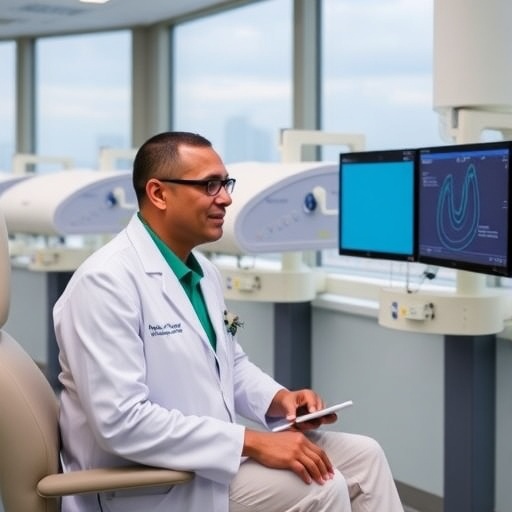Electronic-skin prototypes are stretchy, thin films that can sense temperature, pressure and even monitor blood oxygen or alcohol levels. But most of these devices are missing a key feature of real skin that allows us to feel a wider range of conditions: hair. Now researchers have combined hair-like wires with electronic skin to make a more versatile sensor for robots, prosthetics and other applications. Their report appears in the journal ACS Applied Materials & Interfaces.
Robots and prosthetics are becoming ever more human-like, but the electronic skins designed to enhance their usefulness don't yet have the full range of tactile senses that we have. For example, they cannot "feel" a light breeze. But fine hair, which covers 95 percent of the human body, helps us feel the slightest wind. To capture that sensation, some researchers have developed separate sensors that mimic this fine hair by sensing and detecting air flow. However, that's about all these particular devices can do. Rongguo Wang, Lifeng Hao and colleagues wanted to expand on this, combining the features of electronic skin and hair in a single device.
The researchers created an array of artificial hairs with glass-coated, cobalt-based microwires and embedded the ends of the wires in a silicon-rubber "skin." The "hairy skin" could repeatedly detect a range of pressures, including the landing of a fly, a light wind and a 10-pound weight. And when used with a two-finger robot gripping a plastic block, the new sensor could "feel" slip and friction forces.
###
The authors acknowledge funding from the National Natural Science Foundation of China.
The abstract that accompanies this study is available here.
See how the sensor works in this Headline Science video.
The American Chemical Society is a nonprofit organization chartered by the U.S. Congress. With nearly 157,000 members, ACS is the world's largest scientific society and a global leader in providing access to chemistry-related research through its multiple databases, peer-reviewed journals and scientific conferences. Its main offices are in Washington, D.C., and Columbus, Ohio.
To automatically receive news releases from the American Chemical Society, contact [email protected].
Follow us: Twitter Facebook
Media Contact
Michael Bernstein
[email protected]
202-872-6042
@ACSpressroom
http://www.acs.org
############
Story Source: Materials provided by Scienmag




